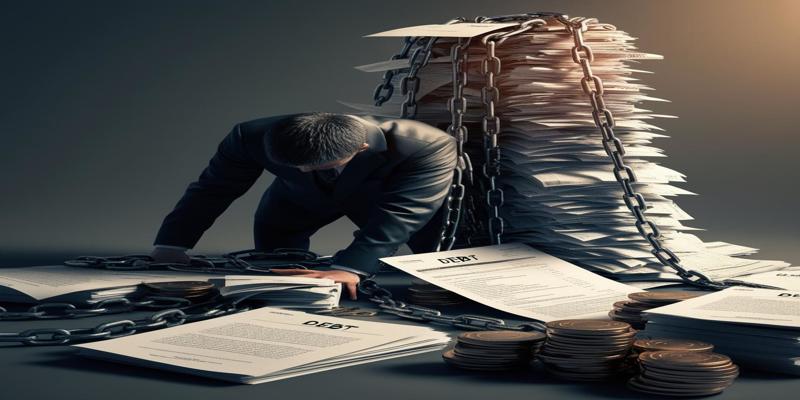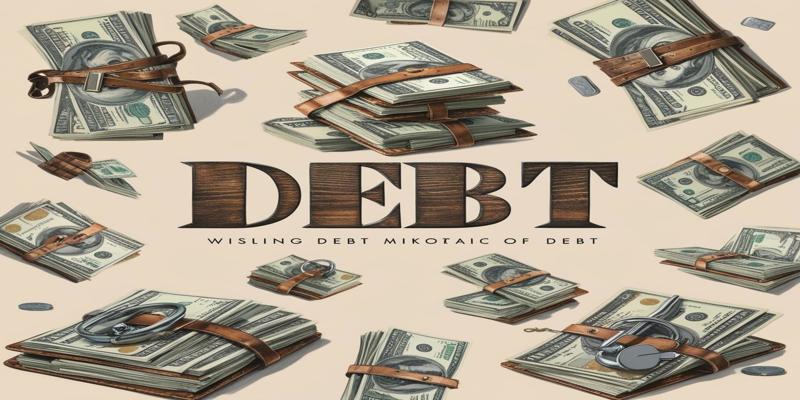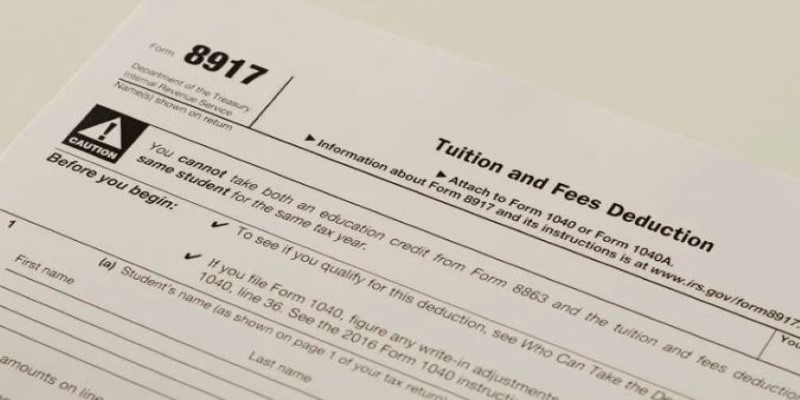How To Get Out of Debt
Dec 09, 2024 By Darnell Malan
Does excessive debt burden you? You are not alone. Millions of Americans struggle with credit card balances, student loans, and other types of debt. But keep hope. With the right strategy and a will to act, one can break loose from the noose of debt and achieve permanent financial freedom. This article will show you sure-fire ways to systematically cut down your debt level and pay it off once and for all. Let's plunge in.
Building Up and Spiraling Out of Control: How Debt Accumulates
 Debt can have very modest beginnings and build up silently until it has ballooned into an overwhelming burden. Understanding how this occurs is important in order to take effective preventive and treatment measures.
Debt can have very modest beginnings and build up silently until it has ballooned into an overwhelming burden. Understanding how this occurs is important in order to take effective preventive and treatment measures.
Debt Snowball
Most debt starts innocently enough, with a bit of credit card balance or a personal loan. But if you're not watching, it can quickly snowball. A vicious cycle can ensue because the interest charges mount up and add to the principal balance to drive a giant interest net. If you are making new purchases, your debt could stay the same.
The Role of Lifestyle Inflation
The temptation to improve one's lifestyle as one's income increases may be irresistible. New cars, larger houses, and luxurious vacations can rapidly absorb added income. Financial advisors sometimes refer to this as "lifestyle inflation," which often translates into increased dependence on credit and greater debt, even as incomes increase.
Unanticipated Life Circumstances
Life is unpredictable; everything can get derailed-even the best-laid financial plans-with one fundamental curveball. Medical emergencies, job loss, or major home repairs often make people rely on credit cards or loans to cover such expenses. Without an emergency fund, these situations can rapidly escalate your debt.
The Psychology of Spending
Most of our spending is dictated by emotional reasons and societal pressures. The urge to "keep up with the Joneses" and the temporary high associated with retail therapy can cause many of us to overspend impulsively rather than within our budgets. Once developed, these habits can increase debt over time.
Setting a Realistic Budget to Free Up Money for Debt Payments
The key to decreasing debt is having a realistic budget. A realistic budget allows you to see your income and expenses clearly and point out areas you can cut back on and use to pay off some of your debts.
Track Current Expenses
Start by tracking all your expenses for a month. This includes everything from essential bills to discretionary spending. Use a spreadsheet or budgeting app to categorize your costs, making it easier to spot patterns and areas for potential savings.
Differentiate Between Needs and Wants
Once you have a clear picture of your spending, distinguish between necessities and luxuries. While it's essential to maintain a reasonable quality of life, identifying nonessential expenses can reveal opportunities to free up money for debt payments.
Set Realistic Goals
Be realistic about what you can cut out from your budget. It may sound good initially, but it's easy to get overly ambitious and then be discouraged if those goals still need to be met. Instead, try to make long-lasting changes by setting realistic budget goals.
Strategy in Budgeting
When you find something you can cut back on, divert that money toward your debt payments. First, attack high-interest debts that cost you the most over time. Consider implementing the debt avalanche or the snowball technique to frame your repayment strategy.
Review and Adjust Regularly
Your budget is flexible. Life changes, and so should your budget. Check it every month to see if you need to adjust it. This allows for a little wiggle room to stay on target toward getting out of debt as you allow for unexpected expenses or situations where the income changes.
How You Can Increase Income to Pay Debt Off Faster
 Sometimes, speeding up debt payoff requires boosting one's income. Here are some practical ways to increase your earning potential and face the debt head-on:
Sometimes, speeding up debt payoff requires boosting one's income. Here are some practical ways to increase your earning potential and face the debt head-on:
Get Yourself a Side Hustle
In today's gig economy, opportunities for side income abound. Consider leveraging your skills or hobbies to generate extra cash. Freelance writing, graphic design, or tutoring can be lucrative options. Alternatively, explore platforms like Uber, Lyft, or TaskRabbit for flexible work opportunities. Remember, every dollar earned can be directed towards debt reduction.
Negotiate a Raise or Seek Better Employment
Remember to underestimate the power of your primary income source. If you've excelled at your job, it might be time to negotiate a raise. Prepare a strong case highlighting your contributions and value to the company. If a raise isn't feasible, consider exploring new job opportunities that offer better compensation. A higher salary can significantly impact your debt repayment timeline.
Monetize Your Assets
Look around your house-you could be sitting on untapped income potential. Consider renting out a spare room on Airbnb or leasing your parking space if you live in a busy neighborhood. If you have wheels, consider renting those bad boys out on a service such as Turo when not in use. These passive incoming streams can provide a steady flow of extra cash to funnel toward your debt.
Sell Unused Items
Decluttering now can be lucrative. Take an inventory of items you don't need or use anymore. Electronics, furniture, clothes, and collectibles are all fair game to find new homes while padding your wallet. Take advantage of online marketplaces like eBay, Facebook Marketplace, or Craigslist to help you connect with potential buyers. This can significantly dent your debt balance.
Debt Snowball vs Debt Avalanche: Which Method is Best?
The two most popular methods of paying off multiple debts are debt snowball and debt avalanche. Both methods can be effective, but each has psychological and financial implications. Let's examine each technique more closely so that you may select the one most applicable to your situation.
The Debt Snowball Method
The Debt Snowball: Popularized by financial guru Dave Ramsey, the debt snowball method focuses on first paying off your smallest debts. Here it goes:
- List your debts from smallest to most significant, regardless of interest rates.
- Pay the minimum amount on all debts except the small ones.
- Put any extra money toward the smallest debt.
- Once the smallest debt is paid off, move on to the next.
The Debt Avalanche Method
On the other hand, the debt avalanche method means that the debts carrying the highest interest rates are targeted first. This goes this way:
- List your debts from highest to lowest interest rate.
- Make minimum payments on all debts.
- Apply any extra funds to the debt with the highest interest rate.
- Once the highest-interest debt is paid off, move to the next highest.
Choosing the Right Method for You
Ultimately, the best approach will rely on your financial situation and psychological makeup. The debt snowball might be your best bet if you want motivation to stay on track. If you are focused on reducing interest payments while having the discipline to keep up with a long-term plan, the debt avalanche will be more suitable. Otherwise, the most crucial factor is to apply consistently the way you choose one that is debt-free.
Conclusion
Follow these time-tested strategies to regain control over your financial future and bid goodbye to debt. With some discipline and patience, you will attain financial freedom and create a safer future for yourself and your loved ones. Take the first step today by selecting at least one of these tips and implementing it. Now is the time to take the first step into your debt-free journey.








